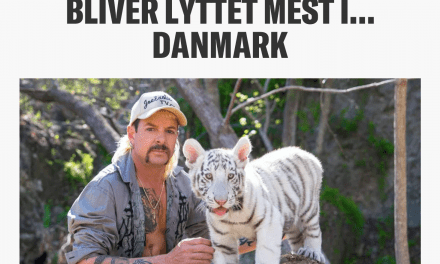A conference I could attend that I didn’t have to work at and was indeed about my topic of interest? Wow!
From 25th – 27th October 2023 the biennial ECREA Television Section Conference, Redefining Televisuality: Programmes, Practices, Methods was held at the Film University Babelsberg in Potsdam, Germany, relating to John T. Calldwells (1995) concept of televisuality. My fellow students in media studies at the Film University and I were set the task to each cover and report on one panel of the conference. But we all attended the two keynotes, firstly Caldwell’s opening keynote on labour conditions within the TV industry, secondly Karin van Es’s talk on (Re)Claiming Television, that argues for a demystification of Netflix’s image. I was particularly interested in the panel “Labour and Ideology” which presented diverse research topics:
The panel started with Andrea Virginás from Babes-Bolyai University, Romania who presented her research on ‘Televisual modes, and midcult aesthetics in limited HBO-series on Eastern European collective traumas’. In her presentation, Virgnás explained that TV in general and in this case HBO series like Chernobyl (with Sky, 2019), The Informant/ A besúgó (2022) and Spy/Master (2023) in particular are part of the process of cultural trauma processing. They represent and are part of the formative collective experience of trauma that Eastern Europe emerged from after the Second World and the Cold War. Virginás proposed that there are three different communicative generations that cope with the trauma differently ‘suggesting that current “televisuality” has a specific role in “premediating” the next catastrophe within the specific conditions of linking three communicative generations: “filmic” victims, “televisual” forgetters, and “platform” mourners.’ Relating to Caldwell’s concept of televisuality this HBO-like ‘aestheticization’ of the collective traumas of Eastern Europe also translate into ‘everyday’ televisuality.
Her presentation was followed by Nicolette Marini-Maio from Dickinson College, Pennsylvania, who talked about the Italian fashion influencer Chiara Ferragni and her ‘Storytelling of Authenticity in her Postfeminist Branded Persona’. I was intrigued by it as I was also once following Chiara Ferragni’s Instagram account and I’m personally interested in influencer culture and the topic of authenticity. Marini-Maio presented Ferragni as a successful online persona who uses herself as a business model by portraying herself as ‘one of us’ and therefore being authentic. Chiara Ferragni first became famous through her blog the blonde salad as well as sharing her outfits and her life on social media. With time the success and her online presence grew so that she started her own brand, was part of multiple TV shows, and had her own TV show called The Ferragnez (2021-) (similar to Keeping up with the Kardashians (2007-)). In her role she speaks up for women’s issues and became an intermediary between women, the government of Italy and most visibly high fashion.
The case of Chiara Ferragni led Nicolette Marini-Maio to conclude that there is a profound paradigm shift in media and, very interestingly, that there is a ‘rise of social media entertainment not the streamers’ and therefore people tend to entertain themselves by following influencers on social media.
After the insight into the life of an Italian Influencer, Italy remained in focus in a talk by Anna Svetlova from Jagiellonian University, Poland. Svetlova introduced us to the New Year’s Eve show Ciao 2020! Which was a special episode of the late-night talk show Evening Urgant (2012-2022) from Russian television. Especially in the current context of Russia’s military aggression in Ukraine the role of television and its shaping of public of opinion and spreading of ideologies is often discussed. Svetlova said: ‘In this context, it is of particular cultural significance which projects have been popular with a wide audience in recent years, by whom and for whom they were created and how they became a part of the wider ideological paradigm.’ The fascinating phenomena of the New Years Eve episode Ciao 2020! is that it is in Italian language and is mimicking Italian disco aesthetics and hits from the 80s. Ciao 2020! as well as the normal talk shows were broadcast on Channel One and both attracted large audiences – also due to the fact that they both lacked ideology messages in comparison to a lot of other Russian TV shows and were having diverse guests. In Ciao 2020! the combination of Soviet legacy and kitsch aesthetics worked surprisingly well and produced good audience ratings that resulted in the commissioning of a second season. Anna Svetlova proposed the concepts of the Imaginary West (Yurchak, 2005) and the idea of the forbidden fruit connected to the Cold War Era and Soviet heritage as the reasons for the successful production and consumption of the show.
Take a look at Ciao 2020! yourself by watching the intro of the show below.
https://youtube.com/watch?v=feX2aA2ELDA
The last presentation – via Zoom – by Veronika Hermann from Eötvös Loránd University, Hungary, connected to the beginning of the panel by putting back Eastern European television into the limelight and its representations of socialism and cultural colonisation. In her research, Hermann examined the relationship between postcolonial symbolism and post-socialist cultural hierarchies by analyzing television series such as 1983 (2018), The Informant (2022), or The King (2022). It connected very well with the presentation of Andrea Virginás who had shown a sequence of The Informant (2022). Veronika Hermann argued that ‘contemporary Eastern European serial products are utilising a transnational, Westernised image of (post-)socialism to address tendencies of contemporary political authoritarianism and populism.’
Ending the panel with a zoom contribution led me to think about the conversations that happen during coffee breaks or on the floors which are some of the most crucial moments during a conference. It highlights the importance of meeting in a physical space together.
Overall, I had a great experience throughout the three days with its diverse topics. For me, some presentations were easier to understand and relatable while others were harder to take in, not only in regards to content but also in regards to the different presentation styles. The conference offered great input on a variety of topics we as students would have never come across in such a condensed way. It also gave us an insight into how media and television studies operate as academic disciplines and processes. Speaking of academic processes: another personal highlight for me, which also made me feel like a proper media scholar, was meeting my professor Brett Mills from my semester abroad at Edge Hill University, UK, and experiencing a throwback moment whilst listening to his presentation.
Lastly, I want to come back to the panel of ‘Labour and Ideology’ and thank the presenters for teaching me that there is televisuality, labour and ideologies in Eastern European TV shows, Russian / Italian New Year’s Eve disco hits shows, and Italian influencer fashion icons.
List of presentations:
- Andrea Virginás (Babes-Bolyai University): ‘Televisual modes’, and midcult aesthetics in limited HBO-series on Eastern European collective traumas
- Nicoletta Marini-Maio (Dickinson College): Scripted, Unscripted, and Live-streaming: The Storytelling of Authenticity in Chiara Ferragni Postfeminist Branded Persona
- Anna Svetlova (Jagiellonian University): Nostalgic Paradigm on Russian TV: The Case of “Ciao 2020!”
- Veronika Hermann (Eötvös Loránd University): Series of Posts – Representations of socialism and cultural colonization in contemporary Eastern European television
Hannah Köhne is a MA media studies student at the Film University Babelsberg where she also did her Bachelor’s degree in Digital Media Culture. In her BA thesis she examined the social media platform BeReal and how it supports authenticity.





